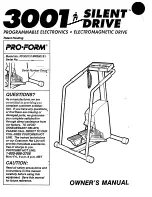
19
BUILT-IN STITCHES – “N” NORMAL RANGE
SATIN STITCH APPLIQUÉ
Use this popular, zigzag stitch creatively to sew appliqués.
Fuse a fabric appliqué shape to a base fabric. Place a
stabilizer beneath the base fabric [Fig. 1].
Satin stitch around the cut edges of the appliqué shape
guiding the fabric so the right swing of the stitch falls just
over the appliqué edge and into the base fabric [Fig. 2].
ATTACHING BUTTONS
Use this foot to quickly and securely attach flat buttons.
Attach the button sewing foot.
Set the stitch width to 0. Position the button and fabric
under the foot. Position the needle over the left hole [Fig. 3].
Turn the handwheel to make sure the needle clears the
hole, and sew several stitches to secure threads.
Turn the stitch width dial to 5 and reposition the fabric
and button to the left slightly so the needle is again
aligned with the left hole [Fig. 4]. Turn the handwheel to
make sure the zigzag stitch clears the holes of the button.
Adjust the stitch width, if needed. Sew 8-10 stitches
[Fig. 5]. To secure the stitches, set the stitch width to 0,
reposition the needle over the button hole and sew a
few stitches. Remove the fabric and button from the
machine and clip the threads [Fig. 6].
SEAMING KNITS
A narrow zigzag stitch is very flexible and durable making
it suitable for medium to lightweight knit fabrics.
Align the edge of the fabric with the seam guide markings
on the needle plate and sew the seam being careful not
to stretch the fabric as you sew [Fig. 7].
STITCH “A” - ZIGZAG
Fig. 3
Fig. 5
Appliqué
Fig. 6
Fig. 4
Fig. 1
Fig. 2
Fig. 7
Seaming knits
RANGE
STITCH
WIDTH
LENGTH
FOOT
N
A
3-5
0.5-1
Open toe
RANGE
STITCH
WIDTH
DROP FEED
FOOT
N
A
5
Lowered
Button attaching
RANGE
STITCH
WIDTH
LENGTH
FOOT
N
A
2
2-3
All-purpose
















































